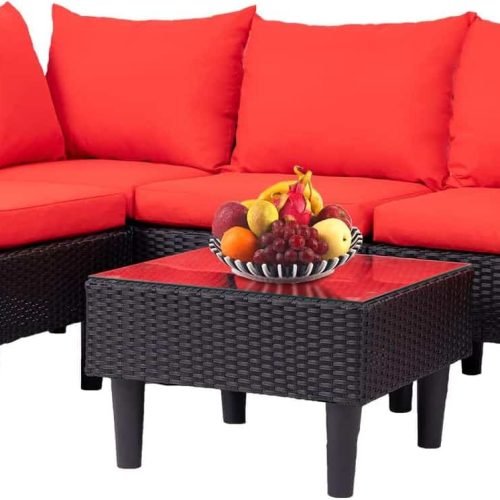7 Edible Cover Crops That Provide Food While Building Your Soil
Edible cover crops are changing gardens and farms in the U.S. They do two things: they make the soil better and give us food. The 7 edible cover crops that provide food while building your soil are a smart choice for those wanting to grow more and protect the planet.
This guide shows how edible cover crops help the environment and give us food. You’ll learn about crops that stop soil erosion, add nitrogen, and give us fresh food all at once. They’re great for both home gardens and big farms, fitting into today’s green farming ways.
Key Takeaways
- Edible cover crops improve soil structure while providing food.
- Seven specific varieties are proven to enhance garden productivity.
- They reduce the need for synthetic fertilizers and pesticides.
- These plants help retain moisture and suppress weeds naturally.
- Growers gain both nutrition and environmental benefits year-round.
Exploring the Benefits of Edible Cover Crops
Edible cover crops do more than just grow—they turn gardens and farms into living ecosystems. By using food-producing cover crops, farmers can cut down on chemicals and make farming more sustainable. These plants help make the soil better for future crops.

Soil-Building Advantages
These crops help the soil in many ways:
- Roots stop soil erosion and make it airier, breaking up hard layers.
- As they decay, they add organic matter, which boosts soil life.
- They keep moisture in, reducing the need for water during dry times.
Nutrient-Rich Impact on Food Production
Food-producing cover crops also help plants grow. Legumes like clover add nitrogen to the soil naturally. This means less need for chemical fertilizers. Fields with these crops see:
- Higher yields in the next crops.
- Soil gets richer over time.
“Cover crops increase soil organic carbon, a key factor in sustainable agriculture,” states a USDA Natural Resources Conservation Service report.
Clover and annual ryegrass are great choices. Clover fixes nitrogen, and ryegrass keeps weeds away. These plants start a cycle where soil gets better and farmers get more crops.
Techniques for Planting and Maintaining Soil-Enriching Cover Crops
To make sure cover crops grow well, start by preparing the soil. Make sure the beds are tilled and free of debris. Check the soil’s pH level to see if it matches what the crops need. Clover likes slightly acidic soil, while rye does well in neutral ranges.

- Seed at recommended rates. Broadcast legumes like vetch at 20-30 pounds per acre or use drills for even distribution.
- Water immediately after planting. Keep soil moist until germination, then reduce frequency as plants establish.
- Maintain with regular weed checks. Hand-pull invaders early to avoid competition for nutrients.
Timing is key. Plant cool-season crops like oats in early fall and warm-weather legumes in spring. Use this guide to align with regional growing zones:
| Crop | Planting Window | Key Maintenance |
|---|---|---|
| Winter Rye | August-October | Mow before seed set |
| Hairy Vetch | September-November | Rotate with non-legume crops |
| Annual Ryegrass | March-May | Water weekly during dry spells |
Regular checks prevent pests. Look for aphids or fungal spots on leaves weekly. Use neem oil sprays to keep pests away. When the crops are at their peak, cut them down and till them under. This releases nutrients back into the soil. With the right care, these plants become a powerful tool for building soil.
Growing 7 Edible Cover Crops That Provide Food While Building Your Soil
Turn your garden into a place that feeds you and the earth. Edible cover crops are a smart choice for gardeners. They help your garden grow strong and healthy.
Identifying the Best Food-Producing Cover Crops
These seven crops are great for both food and soil:
- Peas: They fix nitrogen and their pods are tasty.
- Red Clover: It attracts bees and its leaves are full of protein.
- Winter Rye: It breaks up hard soil and its shoots are good in stir-fries.
- Sorghum-Sudangrass: It grows tall and keeps weeds away.
- Mustard: It keeps pests away and its leaves are spicy.
- Buckwheat: It attracts good bugs and helps clay soils.
- Fava Beans: They add nitrogen and their shoots are delicious.
Step-by-Step How-To Guide for Your Garden
- Soil Test: Use kits from brands like Luster Leaf to check your soil’s pH.
- Seed Mixtures: Mix radishes with oats for a layered garden.
- Plant Timing: Plant peas in spring and mustard in fall for best results.
- Maintenance: Cut crops before they flower to stop seeds from spreading. Then, till them into the soil.
- Harvest Strategy: Pick leaves often to make the plants grow back and keep the soil covered.
Use Seeds Now guides for planting tips. See how clover cuts down on fertilizer and makes soil better over time.
Maximizing Sustainable Farming with Cover Crops for Food and Soil
Sustainable farming cover crops are key in modern agriculture. They mix caring for the environment with growing food. Farms in the U.S. see better soil, lower costs, and more crops by using these methods.
By using less synthetic fertilizers, farmers save money and make their land healthier for longer.
A 2023 USDA study looked at 150 Midwest farms using cover crops. They found a 35% drop in nitrogen runoff and a 20% boost in soil organic matter over five years. Midwest Harvest Farms saw their corn yields go up 12% and cut down on chemicals.
“Cover crops rebuild soil like nothing else. They’re my farm’s foundation for the next generation.”
- Ecological benefits: Prevent erosion, sequester carbon, and support pollinators.
- Economic wins: Lower input costs and stable harvests despite climate shifts.
- Long-term gains: Healthy soils resist pests and diseases naturally.
These methods match USDA conservation programs, offering grants to farmers. As climate challenges increase, using cover crops helps make food systems strong for the future.
Optimizing Gardens with Edible and Soil Building Cover Crops
Boost your garden’s productivity by using nutrient-rich cover crops. These plants make your soil better and give you food, too. This way, you get healthy soil and lots of food.
Integrating Food-Producing Varieties
Grow edible cover crops with your main crops to save space. Here are some tips:
| Crop Type | Edible Use | Soil Benefit |
|---|---|---|
| Red Clover | Leaves for teas | Fixes nitrogen |
| Buckwheat | Seeds for flour | Loosens compacted soil |
| Peas | Edible pods | Adds organic matter |
Maintenance Tips for Nutrient-Rich Cover Crops
- Water deeply but infrequently to encourage deep root growth.
- Mulch around plants to retain moisture and suppress weeds.
- Rotate crops annually to prevent pest cycles and nutrient depletion.
Watch for yellow leaves, which mean you need more nitrogen. Adjust your watering or add compost if needed. Don’t over-till to keep your soil healthy.
Conclusion
Soil-enriching cover crops do two great things: they make the soil better and give us food. These plants stop soil erosion, fight weeds, and add nutrients back into the soil. You can grow peas, clover, or buckwheat to make your land richer while getting food from it.
Using crop rotation and planting at the right time helps these cover crops grow well. The USDA’s Sustainable Agriculture Research & Education program has guides to help. By picking the right plants for your area, you can keep the soil healthy without using harmful chemicals.
Using cover crops helps the earth for a long time. They save water, make the soil better, and reduce the need for outside help. Whether you have a small garden or a big farm, these crops help feed the earth and those who work it. They are key to making food systems strong and lasting.
FAQ
What are edible cover crops?
Edible cover crops are plants grown to improve soil quality. They also provide food like vegetables and grains. This makes them great for both soil health and food production.
How do food-producing cover crops benefit soil health?
These crops help soil health by improving nutrient cycling and adding organic matter. They also increase soil biodiversity. This prevents erosion and helps water stay in the soil, making it more fertile.
Can I grow edible cover crops in my home garden?
Yes! Many cover crops are perfect for home gardens. By choosing the right varieties, you can improve your soil and grow your own food.
What are the best edible cover crops to grow?
Clover, buckwheat, vetch, and field peas are great choices. They provide food and improve soil quality.
How do I maintain edible cover crops for optimal growth?
Keep them watered, avoid overcrowding, and weed regularly. Choose the right planting time and climate for your varieties. This will help them grow well.
Are there any ecological benefits to growing cover crops?
Yes! They boost biodiversity, cut down on synthetic fertilizers, and create a healthier ecosystem. This makes them key for sustainable farming.
What should I do after I harvest my edible cover crops?
Till the leftover plants back into the soil. This acts as natural fertilizer, improving soil health. It also gets your garden ready for the next planting.







